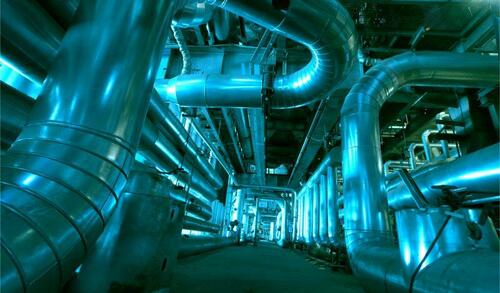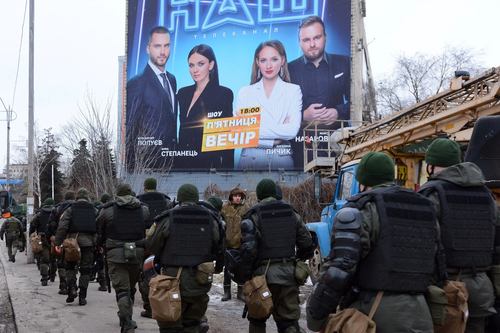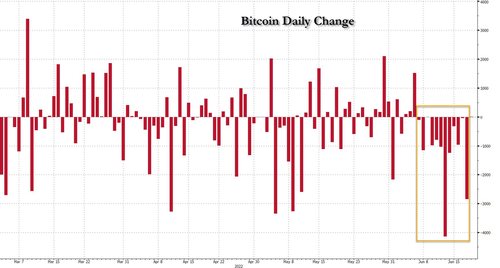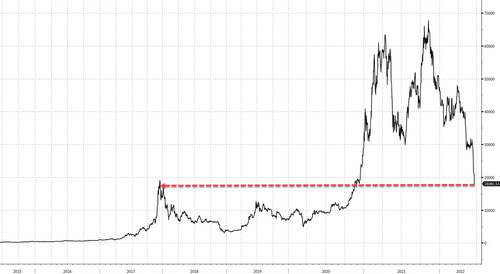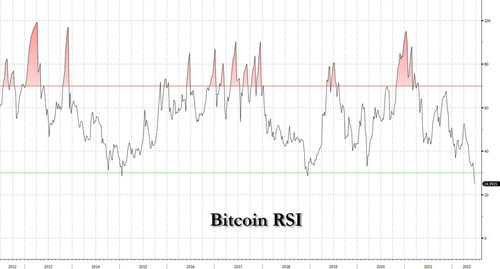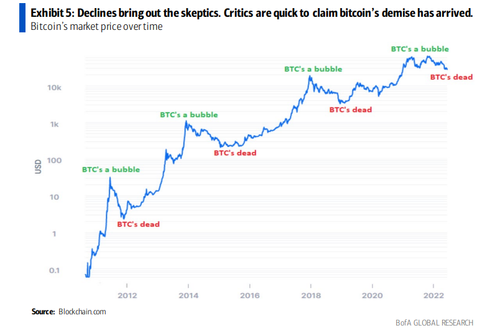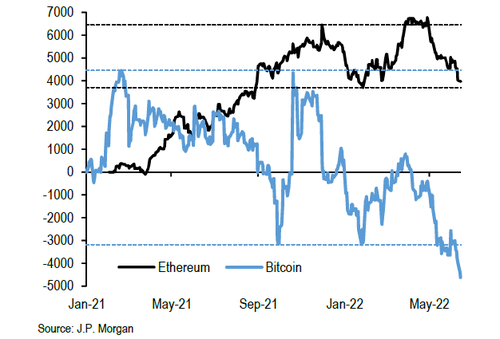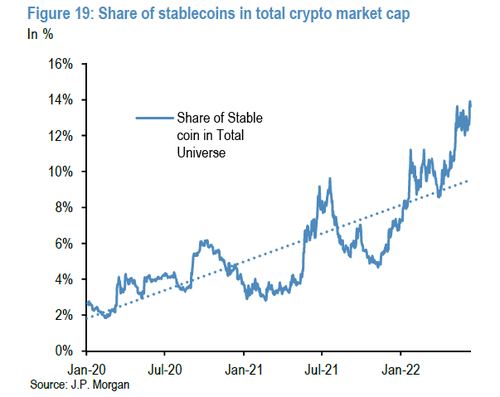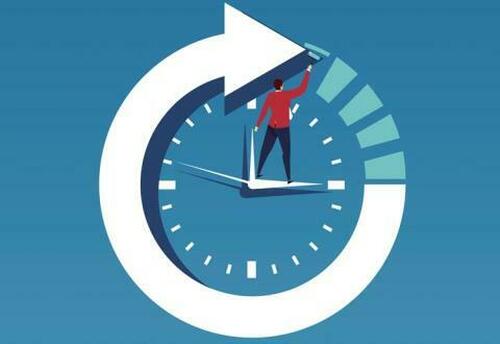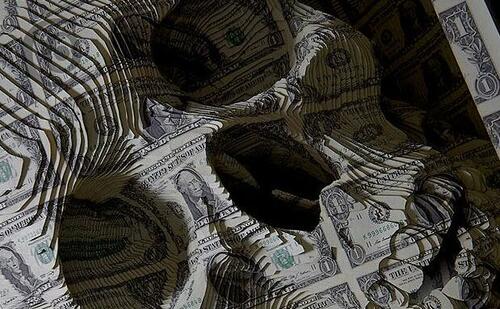We are now entering the storm of the 4th turning. None of us alive today will see the end of it. The reason is that unlike earlier ones we do not have the social, economic and technological (energy mostly) basis to rebuild our societies. So we will muddle through from bad to worse with mediocre politicians telling us that their policies are failing because we are not doing enough of what doesn't work. More green nonsense and woke policies is indeed what will save us... on the road to hell! This is why you can expect major dislocations and wars down this road. Was it unavoidable? Probably, unfortunately. But do we have the power to make it much worse than necessary? Most certainly!

From Peter Reagan
We’ve suggested many times that an economic “storm could be brewing” so that you could start or continue preparing for it.
Well, if Jamie Dimon (CEO of JP Morgan) is correct, it looks like we might have underestimated how bad things could get. According to a recent report on CNBC, Dimon predicts that something much worse is barreling toward our economy:
“You know, I said there’s storm clouds but I’m going to change it … it’s a hurricane,” Dimon said Wednesday at a financial conference in New York. While conditions seem “fine” at the moment, nobody knows if the hurricane is “a minor one or Superstorm Sandy.”
He went on to describe part of the Fed’s game plan for addressing the rampant inflation of the moment, and how he thinks it backed the central banks into a corner:
“We’ve never had QT like this, so you’re looking at something you could be writing history books on for 50 years,” Dimon said. Several aspects of quantitative easing programs “backfired,” including negative rates, which he called a “huge mistake.”
“QT” here refers to quantitative tightening, basically the opposite of quantitative easing (QE). Where QE lowers borrowing costs and pumps money into the economy to encourage spending, QT raises borrowing costs and removes money from circulation. This effectively reduces the demand for loans and credit by making all sorts of loans more expensive for borrowers.
Dimon continued:
Central banks “don’t have a choice because there’s too much liquidity in the system,” Dimon said, referring to the tightening actions. “They have to remove some of the liquidity to stop the speculation, reduce home prices and stuff like that.”
Now, let’s be a little more explicit here…
When Dimon says “stop the speculation,” he’s referring to finally collapsing the “Everything Bubble” I’ve been writing about for months. He’s warning us that the Fed’s announced plans of raising interest rates and shrinking the money supply will make the stock market rout even worse than it’s already been (the S&P 500 is down about 14% year-to-date at the moment). Based on the CAPE or Shiller PE ratio, stocks have to fall another 50% to reach historically average valuations.
When Dimon says, “reduce home prices,” he’s referring to the absurd growth we’ve seen in home prices – up 20% in the last year alone! The astonishing pace at which home prices have outrun wages since 2000 makes it clear that housing is also in a bubble:
That’s right: home prices have risen 194% while wages have gone up 8% — home prices have risen 24 times faster than our ability to pay for them. The chart above also makes it clear how much more inflated home prices are right now than at the very peak of the housing bubble that led to the 2008-09 financial crisis.
That’s the scale of the problem the Fed’s trying to solve: both stocks and homes, the two investments most Americans rely on to build their savings, are astonishingly overvalued.
And that’s exactly why Dimon’s right that the Fed’s actions, and the economic consequences, will be exhaustively analyzed in economics textbooks half a century from now.
We’re spending a lot of time explaining this because Dimon talks like a multi-millionaire Wall Street elite who says things like “derivatives” and “gamma” without definitions.
The bottom line for everyday Americans is, Dimon’s hurricane warning is worth heeding. Because if he’s right, we’re looking at a Category 4 event…
What happened to the Fed’s “soft landing”?
The Fed is in a tough spot right now. In fact, Reuters reports that a “soft landing” isn’t likely:
The Fed is under pressure to decisively make a dent in an inflation rate that is running at more than three times its 2% goal and has caused a jump in the cost of living for Americans. It faces a difficult task in dampening demand enough to curb inflation while not causing a recession.
Major central banks, already plotting interest rate hikes in a fight against inflation, are also preparing a common pullback from key financial markets in a first-ever round of global quantitative tightening expected to restrict credit and add stress.
Here’s a translation:
The Fed must continue raising rates and shrinking the money supply in order to tackle inflation. That makes at least a recession virtually inevitable. Remember, Volcker’s Fed had to create two recessions in order to drag the nation out of the stagflationary 1970s, and one of those was so severe that some called it “the Little Depression.”
So if you take Fed Chair Jerome Powell at his word, that he’s really going to get inflation under control, logically, you should expect a recession. You should also expect inflated assets (stocks and housing included) to crash down to earth. And “major central banks” around the world are doing the same thing, at the same time. Don’t expect global investors to come riding the the rescue of the U.S. economy because they’re likely to have their own struggles at home.
It might be tough to take Powell’s commitment as an inflation-fighter seriously. After all, we’ve watched the Fed ride to the stock market’s rescue constantly for over two decades.
However, a different Reuters report explains that the Fed shifted its stance from “hope” to taking firm action on inflation (finally!):
The Fed hopes inflation will moderate on its own… But Powell has also made clear that the Fed is no longer counting on that, and will ratchet interest rates as high as needed.
“As high as needed” could mean up to 20% (that’s what it took Volcker’s Fed). Fed Vice Chair Lael Brainard is backing Powell up, saying it’s “very hard to see the case” for any pause in rate hikes and QT until inflation is back to normal:
We’re certainly going to do what is necessary to bring inflation back down. That’s our No. 1 challenge right now.
Neither Fed official mentioned the stock market or the housing market. They’re trying to say, without actually scaring anyone, “Look out below!”
I’ll bet the 1970s equivalents of Jamie Dimon warned about incoming hurricanes, too – because it takes strong economic medicine to counteract 40-year-high inflation. Overpriced speculative markets simply can’t withstand high interest rates and quantitative tightening. You could think of these macroeconomic factors as a kind of financial chemotherapy, which works by poisoning everything but hopefully only killing off the most dangerous forms of speculation.
It seems like Dimon’s hurricane will take the form of a lengthy, borderline-catastrophic recession.
And that’s the good news.
Dimon also explained his concerns on how the conflict in Ukraine is making matters worse:
Dimon said he is also worried about the conflict in Ukraine and the impact it will have on oil prices, predicting on Wednesday that it’s in the cards for crude prices to eventually spike as high as $150 to $175 a barrel.
“Wars go bad. They go south. They have unintended consequences,” he said, adding that this conflict will continue to roil the commodity markets around the world, impacting the prices of oil, gas and wheat.
Remember, the Fed can’t control geopolitical conflicts. The Fed can’t sort out supply chain snarls, or force Xi Jinping to cancel Covid lockdowns crippling China’s manufacturing centers.
